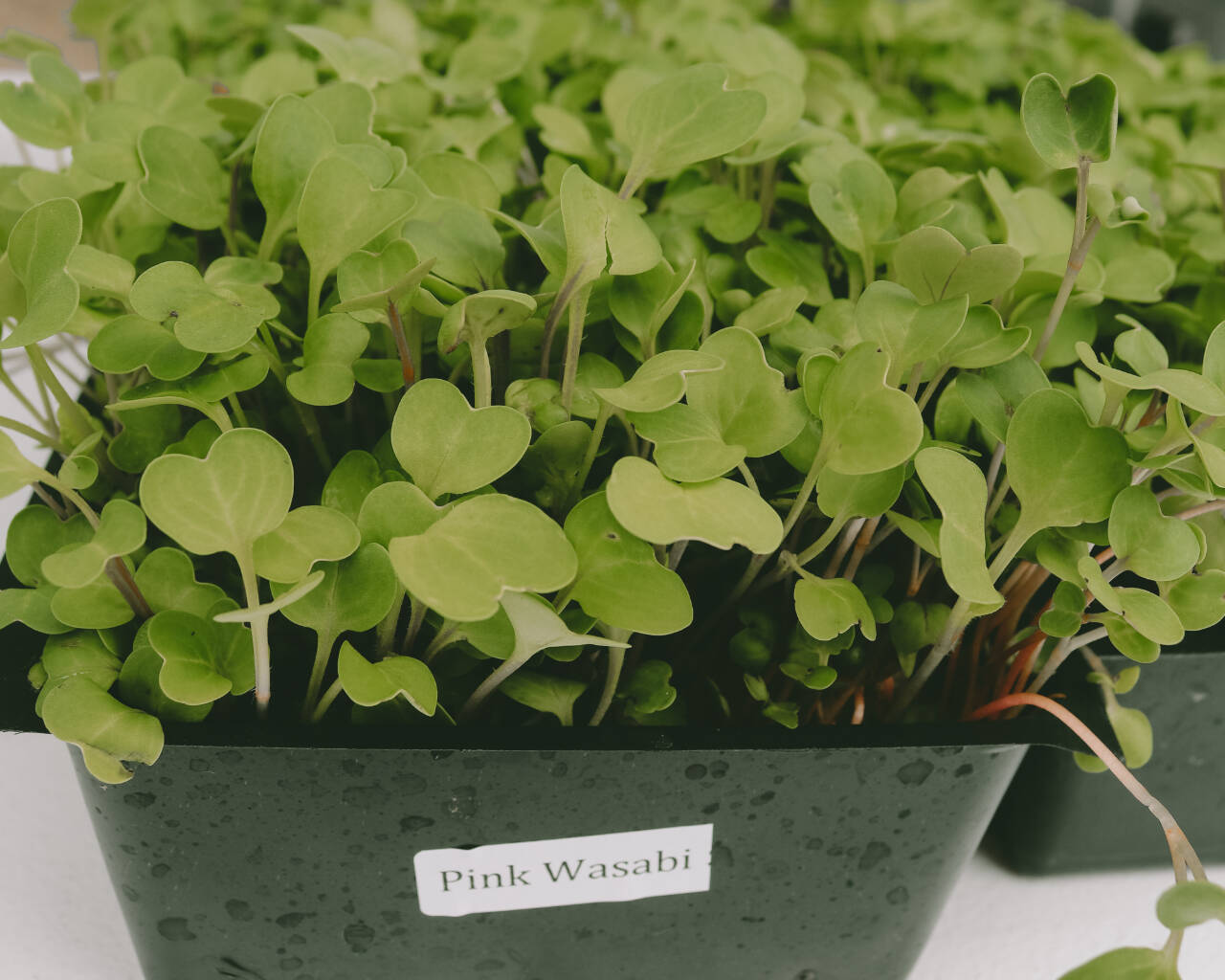Walking down “Farmer’s Row” this next Saturday, a new booth may catch your eye. Neatly arranged rows of vibrant greens like pink wasabi, purple broccoli, and Italian kale adorn the tables and, alongside them, vases showcase elegant, wiry watercress — a common dietary element in Europe and Asia gaining popularity in the United States.
The man behind the counter is David Wilson, owner of The Watercress Farm and the newest addition to the Sequim Farmers and Artisans marketplace.
Wilson, a grower, mycologist and beekeeper, was drawn to the Olympic Peninsula two years ago, seeking a site with sustainable water sources for farming.
When Wilson found what would become Watercress Farm, there was nothing but an old shed and an overgrowing creek.
“Everyone thought for decades the property was a swamp,” Wilson said, “but I just started creating what I knew it could be in my mind.”
Wilson’s work has transformed the site into a beautiful and bountiful regenerative farm. After spending the last two years carefully removing weeds and restoring the creek bed, the compost pile — where organic matter is broken down to feed nutrients back into his soil — is impressive.
“Composting is my favorite, least sexy thing,” Wilson said, laughing.
In addition to raised beds and a small greenhouse, Wilson also utilizes the clear creek water to grow and harvest watercress, the plant for which his farm is named. An aquatic herb chalked full of nutrients, watercress grows best in cold, moving spring water. It has a tangy bite, somewhat similar to arugula, but with its own unique flair.
Watercress roots
Wilson has always had a keen interest in science and food. As a child, he delved into scientific exploration by examining samples of pond water under his brother’s gifted microscope and developing a passion for gardening.
“It was incredible to me to watch things grow,” Wilson said. “To plant seeds, to watch them grow, to watch how they do well and how they don’t do well and why.”
After graduating from Michigan State University, he moved to Los Angeles, Calif., where he worked in and around the entertainment industry.
“There’s two halves of my brain: there’s the arts half and the science half, and they constantly battle for control,” Wilson said.
During his time in Los Angeles, he cultivated friendships with numerous chefs and embraced the vibrant food scene. He noticed a recurring issue among American chefs and home cooks: they struggle to source common global ingredients and herbs.
“My chef friends would whine about not being able to get the ingredients they want, that they read about in blogs or see in magazines or see another chef using on a TV show,” Wilson said.
“And I thought, ‘You know, they have a point.’”
After 30 years in the entertainment industry, Wilson recognized his desire for a transition into the culinary world. However, he remained uncertain about the specific path he should pursue.
Not long after both of Wilson’s parents passed away within the same month, he felt moved to get things growing.
“I was just exhausted, and it came to me that I’ve grown things my whole life. Why don’t I start a chef’s farm?”
He successfully transformed an abandoned walnut grove in Napa Valley into a farm designed to meet the needs of local chefs.
However, the devastating 2018 wildfires emerged, marking one of California’s most destructive and deadliest fire incidents on record, so he decided to start fresh in an area where water was available and fires were less likely.
Local flavoring
Restoring and building Watercress Farm has been an opportunity to merge Wilson’s artistic and scientific inclinations, finding new ways to cultivate bold culinary flavors for the Olympic Peninsula.
Wilson also emphasizes sustainability from ecological and business perspectives, intending to educate shoppers about unique ingredients, collaborate with local restaurants, and maintain an intimate, manageable scale.
“I want to keep it small batch, I want to keep it intimate, where it’s just me, the chefs, and home cooks,” said Wilson. “I want to develop relationships.”
Bailey Loveless is the market director of the Sequim Farmers & Artisans Market.


